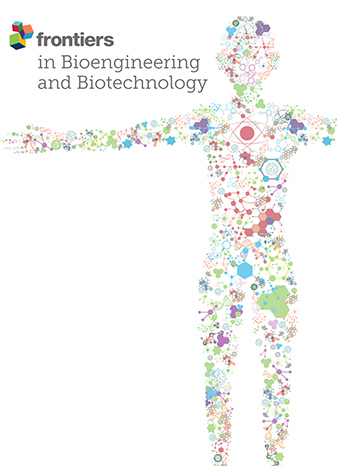单侧 TKA 对中国晚期骨关节炎患者对侧膝关节的运动学影响:一项前瞻性步态分析研究
IF 4.3
3区 工程技术
Q1 BIOTECHNOLOGY & APPLIED MICROBIOLOGY
引用次数: 0
摘要
背景接受单侧全膝关节置换术(TKA)的膝关节骨性关节炎(OA)患者通常会报告未经治疗的膝关节疼痛减轻、功能增强,但其运动学机制尚不完全清楚。我们的研究旨在通过对单侧 TKA 术后未经治疗的膝关节进行步态分析来阐明这些影响。方法 本研究共招募了118名计划接受TKA治疗的膝关节外翻畸形终末期OA患者,分为对侧骨关节炎组(Contra-OA)和对侧TKA组(Contra-TKA),前者包括双侧膝关节均为终末期OA且需要手术治疗的患者,后者包括单侧膝关节接受TKA治疗且未接受治疗的膝关节为终末期OA且等待手术的患者。结果 Contra-TKA组与Contra-OA组相比,在步长、前后平移、活动范围、垂直平移和内外旋转方面均有改善(P值范围为0.0013至0.0463)。在屈伸角度和内收/外展旋转方面也观察到显著差异(p = 0.0013 和 0.0166)。在初始接触(IC)时,内旋-外旋、前后平移和垂直平移存在明显差异。在反向趾离位(OT)时,内旋外转有明显差异。在胫骨垂直(TV)时刻,关节平移的所有三个平移指标都存在显著差异。在其他关键步态周期点,Contra-TKA 组的垂直平移和前后平移继续表现出更有意义的下降。总之,研究结果表明,单侧 TKA 对未经治疗的对侧膝关节具有运动学保护作用,表明 TKA 手术后生物力学适应性得到改善。在初始接触和整个步态周期中观察到的这些改善表明,TKA 术后的积极生物力学支持可能有助于提高步态效率并减轻对侧未治疗膝关节的负荷。本文章由计算机程序翻译,如有差异,请以英文原文为准。
Kinematic effects of unilateral TKA on the contralateral knee in Chinese patients with advanced osteoarthritis: a prospective gait analysis study
BackgroundPatients with knee osteoarthritis (OA) who receive unilateral total knee arthroplasty (TKA) often report reduced pain and enhanced function in the untreated knee, yet the kinematic mechanisms are not fully understood. Our study aimed to clarify these effects through a gait analysis of the untreated knee following unilateral TKA.MethodsThis study enrolled 118 end-stage OA patients with varus deformity scheduled for TKA, categorized into the contralateral osteoarthritis group (Contra-OA), consisting of patients with end-stage OA in both knees requiring surgical treatment, and the contralateral TKA group (Contra-TKA), which included patients who had undergone TKA on one knee and had end-stage OA in the untreated knee awaiting surgery. Kinematic data of the knee joint during treadmill walking were collected using the Opti_Knee gait analysis system, and a comparative analysis was conducted.ResultsThe Contra-TKA group exhibited improvements in step length, anterior-posterior translation, range of motion, vertical translation, and internal-external rotation compared to the Contra-OA group (p -values ranging from 0.0013 to 0.0463). Notable differences in flexion-extension angles and abduction/adduction rotation were also observed (p = 0.0013 and 0.0166, respectively). At the initial contact (IC), obvious differences in internal-external rotation, anterior/posterior translation, and vertical translation were noted. At the opposite toe-off (OT), significant differences in internal-external rotation. At the tibia vertical (TV) moment, significant differences were observed in all three translation indicators of joint translation. At other pivotal gait cycle points, vertical and anterior/posterior translations in Contra-TKA group continued to exhibit more meaningful decrease. Collectively, these findings underscore the protective kinematic effects of TKA on the untreated contralateral knee, indicating an improved biomechanical adaptation following TKA surgery.ConclusionIn summary, the study’s findings indicate that unilateral TKA imparts kinetic effects on the untreated contralateral knee, as evidenced by significant improvements in key gait parameters. These enhancements, observed at both initial contacts and throughout the gait cycle, suggest a positive biomechanical support post-TKA, might contribute to better gait efficiency and reduced load on the contralateral untreated knee.
求助全文
通过发布文献求助,成功后即可免费获取论文全文。
去求助
来源期刊

Frontiers in Bioengineering and Biotechnology
Chemical Engineering-Bioengineering
CiteScore
8.30
自引率
5.30%
发文量
2270
审稿时长
12 weeks
期刊介绍:
The translation of new discoveries in medicine to clinical routine has never been easy. During the second half of the last century, thanks to the progress in chemistry, biochemistry and pharmacology, we have seen the development and the application of a large number of drugs and devices aimed at the treatment of symptoms, blocking unwanted pathways and, in the case of infectious diseases, fighting the micro-organisms responsible. However, we are facing, today, a dramatic change in the therapeutic approach to pathologies and diseases. Indeed, the challenge of the present and the next decade is to fully restore the physiological status of the diseased organism and to completely regenerate tissue and organs when they are so seriously affected that treatments cannot be limited to the repression of symptoms or to the repair of damage. This is being made possible thanks to the major developments made in basic cell and molecular biology, including stem cell science, growth factor delivery, gene isolation and transfection, the advances in bioengineering and nanotechnology, including development of new biomaterials, biofabrication technologies and use of bioreactors, and the big improvements in diagnostic tools and imaging of cells, tissues and organs.
In today`s world, an enhancement of communication between multidisciplinary experts, together with the promotion of joint projects and close collaborations among scientists, engineers, industry people, regulatory agencies and physicians are absolute requirements for the success of any attempt to develop and clinically apply a new biological therapy or an innovative device involving the collective use of biomaterials, cells and/or bioactive molecules. “Frontiers in Bioengineering and Biotechnology” aspires to be a forum for all people involved in the process by bridging the gap too often existing between a discovery in the basic sciences and its clinical application.
 求助内容:
求助内容: 应助结果提醒方式:
应助结果提醒方式:


